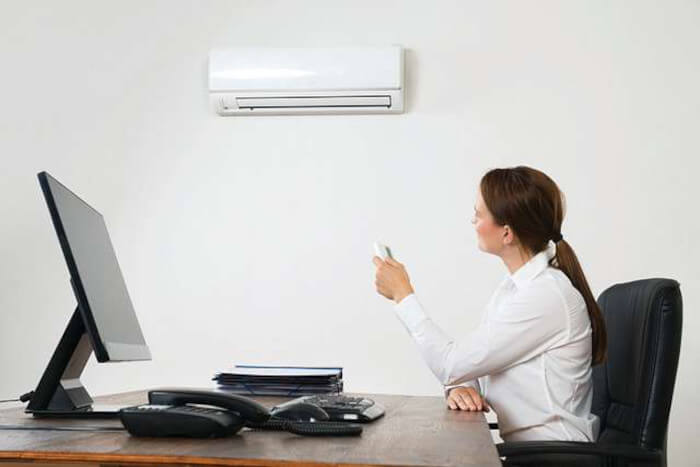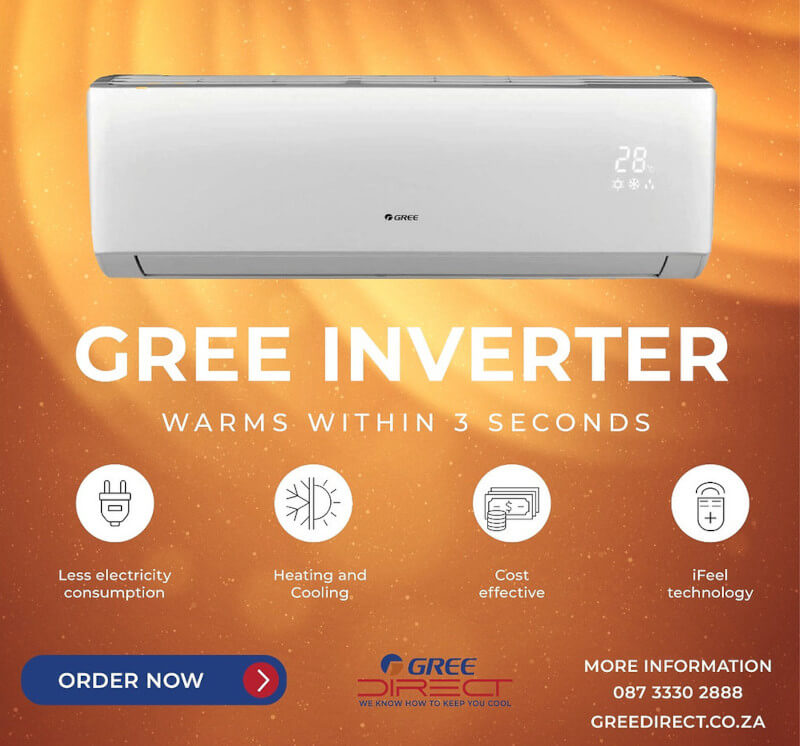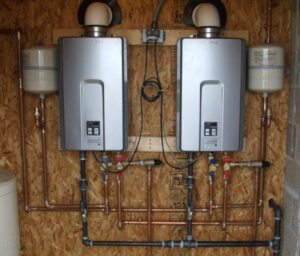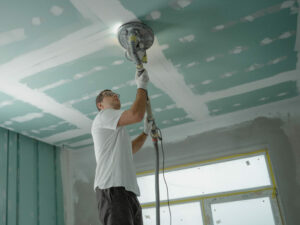HVAC systems are increasingly important in South African building structures due to the country’s dry and hot climate. Nevertheless, in light of the threat posed by global warming and the degradation of the environment, it is essential to think about how HVAC configuration affects the greenness and efficiency of a building’s operations.
Many HVAC companies are aware of the significant impact HVAC has on a building’s ability to save money on electricity costs, lessen its environmental impact, and provide healthier air for its occupants. In this post, we’ll discuss how HVAC configuration affects a building’s overall efficiency and long-term sustainability, as well as what variables should be prioritised when creating an efficient and ecologically conscious HVAC system.
Long-term Effects of Air Conditioning Plans on Building Energy Use

The HVAC configuration of a building could have a major effect on the building’s environmental friendliness. Heating, ventilation, and air conditioning (HVAC) systems use a lot of electricity, and a badly made system can cause inefficient energy use, which then in turn increases carbon dioxide emissions and the cost to operate the building. However, an Air conditioning system that has been thoughtfully engineered can help save money on utility bills, boost performance, and improve the building’s environmental footprint.
The well-being and productivity of the building’s occupiers can benefit from an HVAC system’s careful configuration in more ways than one. As a result, many variables influence a building’s sustainable growth, and the HVAC system is essential to meeting those goals.
Energy and Climate Control Design’s Influence on Environmental Performance
Mechanical ventilation and air conditioning (HVAC) systems are among the major consumers of electricity in structures and can add greatly to the release of greenhouse gases, so HVAC configuration has a major effect on ecological performance. An inefficient heating, ventilation, and air conditioning (HVAC) system can raise emissions and carbon footprints due to wasteful energy use. A properly planned HVAC system, on the other hand, can cut energy costs and help structures achieve their sustainability objectives.
Choosing Energy-Efficient HVAC Systems
Air conditioners and heat pumps with high-efficiency ratings are just two examples of HVAC systems that can drastically cut a building’s energy use and greenhouse gas emissions. Other design considerations can impact a system’s efficiency, such as the dimensioning and arrangement of ductwork and air distribution networks.
Using renewable energy to power HVAC systems is another crucial consideration. Powering HVAC systems with electricity generated from renewable sources like wind or solar power further reduces a building’s carbon emissions by reducing its dependence on energy that is not renewable.
Finally, HVAC system upkeep and operation can have an impact on ecological efficiency. Heating, ventilation, and air conditioning (HVAC) systems that are properly maintained use less energy and produce fewer emissions than those that aren’t. Further, the system’s effective functioning and consumer training can help guarantee that it’s being utilised properly and effectively, which in turn improves its sustainability impact.
How to Develop a Robust Air Conditioning System

There are many things to think about when developing an environmentally friendly HVAC system. Among these are:
Energy Efficiency
Energy efficiency is an important component in achieving sustainability objectives. When the HVAC system is eco-friendly, it uses less power, which means reducing costs and fewer emissions. When used to power HVAC systems, energy from renewable sources substantially lessen a building’s carbon emissions. Solar panels, wind generators, and geothermal heating and cooling systems all fall under this category. Maximizing energy efficiency relies heavily on the HVAC system’s dimensioning and placement. Energy wasted from a system that is too small can significantly raise emission levels and running costs.
Insulation
Having the building’s exterior and HVAC ducts properly insulated can drastically cut down on energy waste and increase the building’s performance. Solar benefit, organic airflow, and shading are all affected by a building’s orientation, and these factors in turn affect the HVAC system’s energy needs.
How People in a Building Act Can Have an Effect on the HVAC System’s Longevity
To lessen energy usage and boost sustainability, training inhabitants on energy-saving behaviors and correct utilization of the system is essential.
Upkeep
A well-maintained and operated HVAC system is crucial for optimal performance. To lessen the amount of energy used and the amount of pollution released, preventative maintenance should be performed regularly. Property owners and HVAC specialists can collaborate to improve environmental efficiency and long-term viability by taking these into account during the HVAC system design process.
Filters, Hatches and Air Ducts
Many HVAC units are made to be dropped down into the space between floors. Because of this, ducts may need to be installed in walls or ceilings. Ducts, hatches, and plenums are the common terms for these spaces, but once construction is complete, they are typically inaccessible to the public. The holes, nevertheless, are critical for the A/C to work correctly. To ensure that these duct spaces are in line with each other, developers may have to develop loftier floors, greater ceiling heights, and larger rooms.
Airconditioning Ducts
A building’s heating, ventilation, and air conditioning (HVAC) system is built to facilitate the free flow of air between individual rooms and between the building’s various functional zones. Therefore, it is important for architects to smartly place vents in their layouts, not only to allow for optimal air circulation for cooling and heating systems but also to allow for the efficient operation of cleaning units. Clean air vents are essential because the areas in which they are fitted can act as incubators for contaminants and pollen, aggravating existing allergy symptoms and respiratory problems. Vents for cooling and heating systems aren’t limited to being installed at eye height; they can additionally be positioned between structural beams.
The Location of Windows
When determining where to put windows in a building, the heating, ventilation, and air conditioning (HVAC) system and how it will be installed must be taken into account. To maximize the benefits of natural lighting and airflow, windows are typically positioned in strategic locations throughout a building. Vents for air conditioning units aren’t the only things developers have to think about when determining how to distribute warm and cool air throughout a building; heating ducts can have an impact, too.
Strengthening the Building’s Core
It was recently discovered that heating, ventilation, and air conditioning (HVAC) systems had a significant impact on the evolution of the conventional building core. Large pipelines were needed to transport HVAC system components from the cellar to the upper floors, which explains why. Consequently, designers had to take them into account when deciding how to lay out rooms about them. Furthermore, architects have had to take into account the convenience of their clients by designing air conditioning and heating systems. This necessitated the installation of massive mechanical equipment rooms within the building.
Get In Touch With The Heating and Cooling Experts at Gree Direct

HVAC systems that promote environmental efficiency and future sustainability are a priority for Gree Direct’s products and installation teams. They have considerable experience implementing energy-efficient HVAC systems for building structures of varying types and dimensions, making them the go-to company for HVAC services in South Africa.
In the interest of helping their customers meet their sustainability objectives, their staff of qualified technicians offers HVAC solutions that are both effective and environmentally friendly. They collaborate alongside their clients throughout the entire process, from selection to setup and upkeep, to guarantee that their HVAC system meets or exceeds all of your expectations in terms of energy savings, convenience, and environmental friendliness. Visit Gree Direct’s website to get in contact with them right away.

Landscaping is one of the most demanding forms of art that a person can engage…

Is it best to buy a new water heater from a store that advertises low…

Balustrades are a common addition to staircases, balconies, and patios in the home. They provide…

You are certain of one thing, however, and that is the fact that you are…
